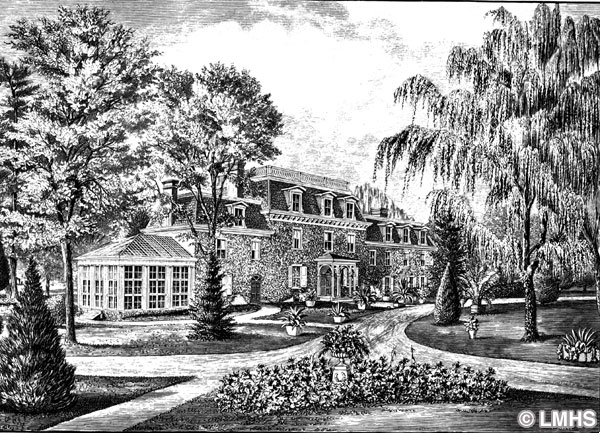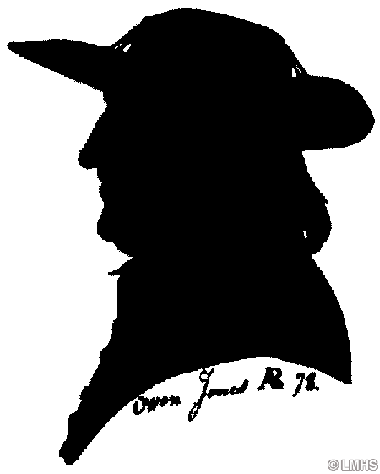Colonel Owen Jones’ Wynne Wood

Joseph Price’s Diary notes the May 1803 raising of rafters for a substantial house that was the nucleus of one of the two mansion houses…probably the main dwelling…on the large estate thought to have received its name Wynne Wood at mid century during Colonel Jones’ ownership. This property had been part of the 446-acre plantation established in the late 17th century by Welsh Quaker Robert Owen. Owen’s son-in-law Jonathan Jones (a grandson of William Penn’s physician Thomas Wynne) took the place over after his marriage to Gainor Owen.
This large tract remained substantially intact in that family for over two centuries. One notable resident was the couple’s son Owen Jones (1711-1793), the last provincial treasurer of Pennsylvania before the Revolution.
Another was his grandson and namesake, the prominent soldier-politician Colonel Owen Jones (1819-1878), a University of Pennsylvania graduate admitted to the bar in 1842. He is thought responsible for calling attention to the early link between the Wynne and Jones families by introducing the name Wynne Wood first for his own property, then seeing the name Wynnewood used for the nearby railroad station, and the surrounding community.

Made rich by wise investments and a political maverick, he cut his old family ties with the Federalists, Whigs and Republicans for a lifelong interest in Democratic politics. Colonel Owen Jones served as a county commissioner and was elected to Congress in 1856.
This son-in-law of a Continental Army veteran quickly responded to the Civil War’s outbreak by raising a company of cavalry among his friends in Lower Merion and nearby townships which became the 44th Regiment Pennsylvania Cavalry. He served with distinction as a Colonel of this regiment at Fredericksburg, Manassas, Cold Harbor and many other campaigns that often decimated his troops.
His Wynne Wood mansion was destroyed by fire in 1858, its contents saved and the house rebuilt as a 2½-story mansard-roof dwelling with lateral wings and a parapet. Its handsome three bay southerly prospect featured a portico with cornice and four tall columns. Its style reminiscent of traditional Virginia plantation houses, this dwelling with its wide sweep of lawn abutting the Main Line rail tracks, became a 19th century showplace.
It was next owned by the Colonel’s son, J. Aubrey Jones. Wynne Wood stood on just 100 acres in 1900, and in 1908 passed to the Joneses’ cousins, the Tolands, who demolished it soon afterward.
